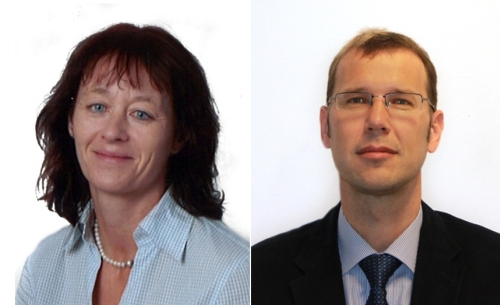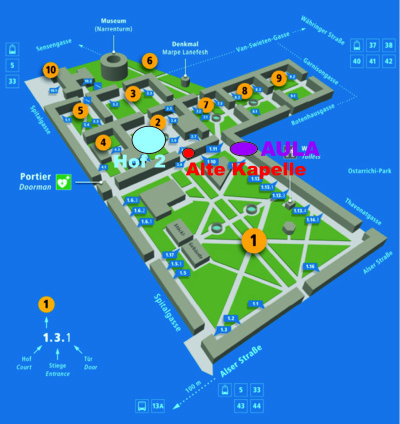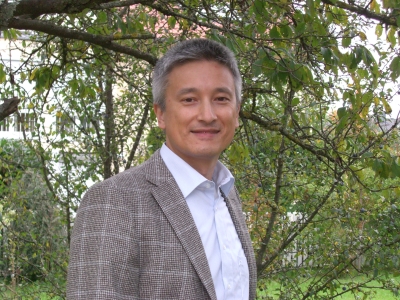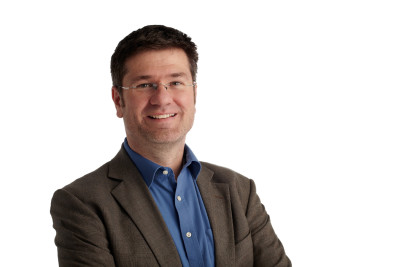Public Talks
We offer a variety of talks for the general public. The talks are given in German.
Physics meets Medicine
MedAustron in Wiener Neustadt will be one of the leading centres for ion beam therapy and research using protons and carbon ions. Through ion beam therapy, tumors are irradiated with charged particles, either protons or carbon ions. As a sufficient radiation dose can precisely be applied to the tumor tissue, ion beam therapy significantly reduces the radiation of the healthy tissue around the tumor. A particle accelerator is necessary to facilitate the irradiation with protons as well as carbon ions – the synchrotron-based accelerator at MedAustron was developed in collaboration with the European Organization for Nuclear Research CERN.
As well as the treatment of patients in clinical trials, non-clinical research will be conducted at the MedAustron facility. Non-clinical research will be carried out in a broad range of research programmes in medical radiation physics and radiation biology. The accelerator facility will provide opportunities for investigations in experimental physics.
How does ion beam therapy work? How should one imagine MedAustron’s particle accelerator? These questions and more will be answered by physician Univ.-Doz. Dr. Ulrike Mock and physicist Mag. DI Dr. Thomas Schreiner in their talk.
The talk will be given in German. FREE ADMISSION!

Ulrike Mock (EBG MedAustron) and Thomas Schreiner (PEG MedAustron)
- Date: Thursday, 23 July
- Time: 18:30
- Address: “Altes AKH”, Campus of the University of Vienna, Spitalgasse 2, 1090 Vienna
- Place: Alte Kapelle
- Public Transport: take tram 43 or 44 from station “Schottentor” to station “Lange Gasse”
- Walking distance: approx. 13 min.
- Maximum number of participants: 80
- FREE ADMISSION
- Map: Please have a look at the map for the respective locations.

Altes AKH
Quarks, Higgs and the structure of the vacuum
With the discovery of the Higgs particle a long-proposed model on the generation of the masses of the elementary particles, called the “Higgs mechanism”, turned out to be true.
But does that affect our daily life?
Interestingly, the Higgs mechanism makes definite statements on the stability of the space in which we live and everything in the universe takes place. Our space could actually be less stable than we would wish.
In the presentation I explain the role of the Higgs-mechanism in our current understanding of the elementary particles and why particle physicists like me are certain that the Higgs particle has really been found at the LHC. I then talk about how the measured elementary particle masses affect the structure of the vacuum and which conclusions on its stability might be possible.
The talk will be given in German. FREE ADMISSION!

Andre Hoang (Faculty of Physics/University of Vienna)
- Date: Sunday, 26 July
- Time: 18:30
- Address: “Altes AKH”, Campus of the University of Vienna, Spitalgasse 2, 1090 Vienna
- Place: Alte Kapelle
- Public Transport: take tram 43 or 44 from station “Schottentor” to station “Lange Gasse”
- Walking distance: approx. 13 min.
- Maximum number of participants: 80
- FREE ADMISSION
- Map: Please have a look at the map for the respective locations.

Altes AKH
LHC – The World’s Largest Particle Accelerator
The two physicist Peter Higgs and François Englert were awarded with the Nobel Prize in physics in 2013 for a theory which was proven one year earlier by the largest and most powerful particle accelerator in the world, the Large Hadron Collider (LHC) of CERN in Geneva (Switzerland). This theory was postulated already more than 40 years ago and is about the origin of masses of elementary particles and the existence of a special particle, the so-called Higgs particle.
In the last two years it has become a little quieter around the LHC, as this “machine” needed some maintenance, like a car at “100,000 km service”. In spring this year, the LHC has now been put back into operation, more powerful than ever, and is ready to solve even more mysteries of the universe.
In this presentation a brief introduction about the physics is given before the technique of this scientific apparatus is presented: Which particles are accelerated? How to speed up? What happens when particles collide? What is the relation to the Big Bang? And what can the LHC reveal now, after the Higgs particle has been discovered?
For this, the Compact Muon Solenoid (CMS) experiment is presented that attempts to provide answers to these questions. It records what happens in the particle collisions at the LHC for this purpose. Scientists, like the presenter, can conclude on new and yet undiscovered elementary particles from it. The technical difficulties on the way there, such as the handling of enormously high volumes of data, are shown in this presentation.
The talk concludes with some examples, which show that many techniques and methods that were originally developed for basic research have become essential in everyday life
The talk will be given in German. FREE ADMISSION!

Thomas Bergauer (Institute of High Energy Physics)
- Date: Thursday, 30 July
- Time: 18:30
- Address: “Altes AKH”, Campus of the University of Vienna, Spitalgasse 2, 1090 Vienna
- Place: Alte Kapelle
- Public Transport: take tram 43 or 44 from station “Schottentor” to station “Lange Gasse”
- Walking distance: approx. 13 min.
- Maximum number of participants: 80
- FREE ADMISSION
- Map: Please have a look at the map for the respective locations.

Altes AKH
